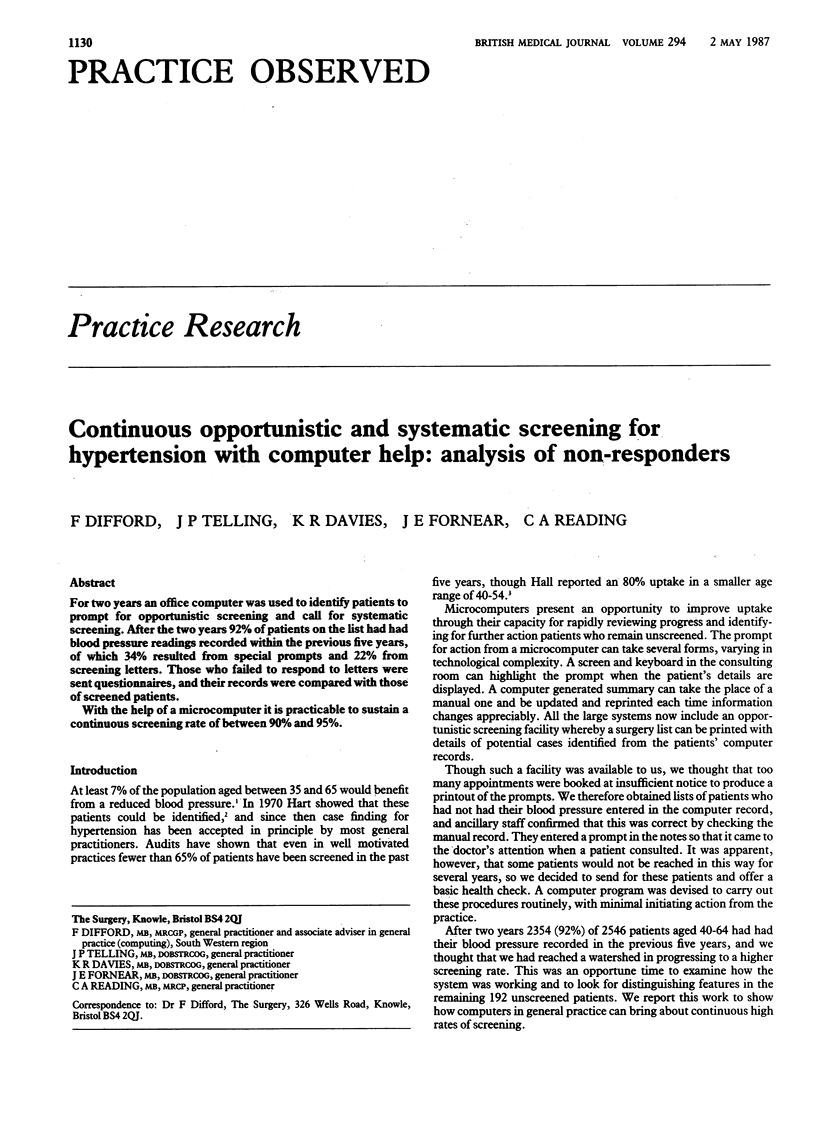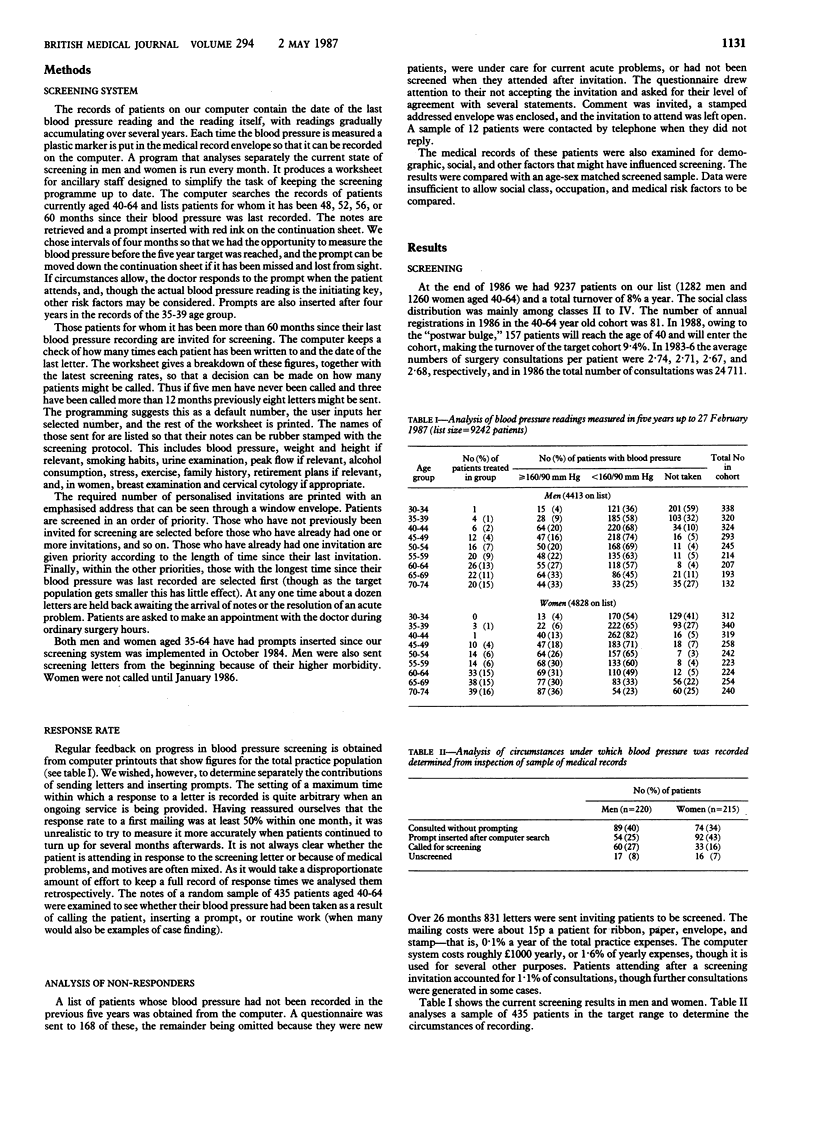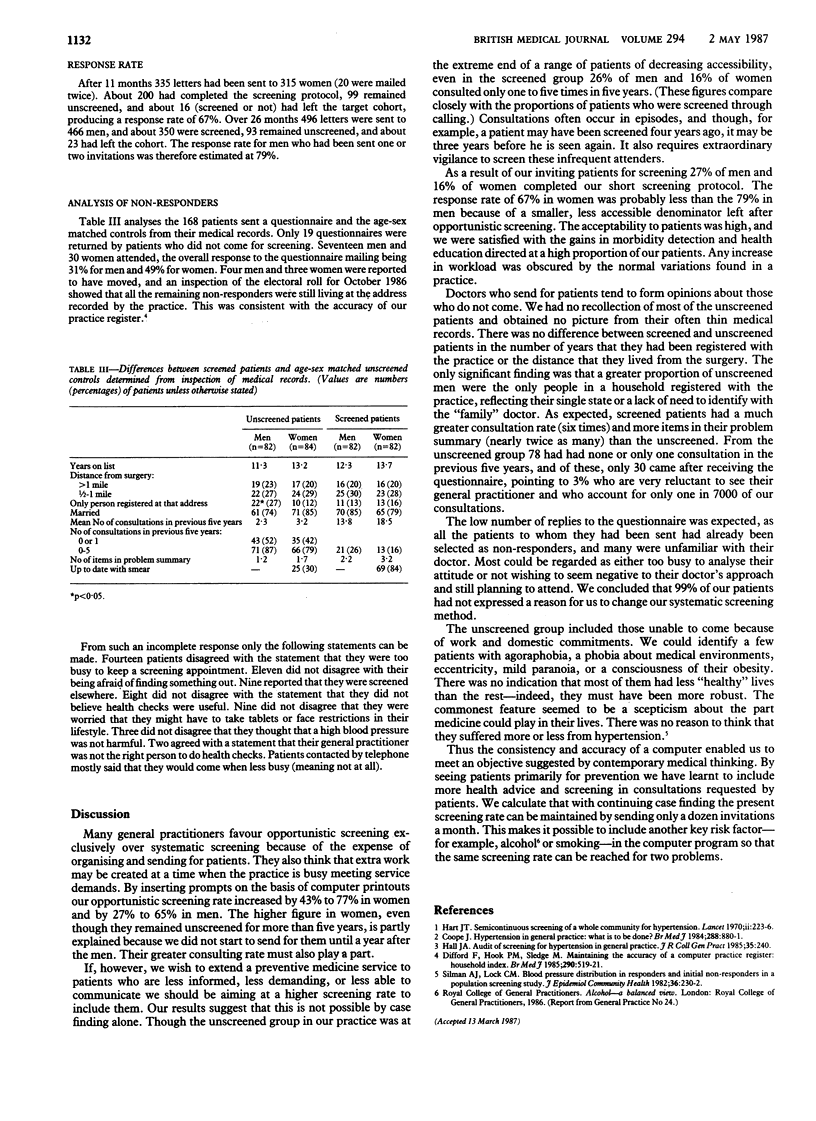Abstract
For two years an office computer was used to identify patients to prompt for opportunistic screening and call for systematic screening. After the two years 92% of patients on the list had had blood pressure readings recorded within the previous five years, of which 34% resulted from special prompts and 22% from screening letters. Those who failed to respond to letters were sent questionnaires, and their records were compared with those of screened patients. With the help of a microcomputer it is practicable to sustain a continuous screening rate of between 90% and 95%.
Full text
PDF


Selected References
These references are in PubMed. This may not be the complete list of references from this article.
- Coope J. Hypertension in general practice: what is to be done? Br Med J (Clin Res Ed) 1984 Mar 24;288(6421):880–881. doi: 10.1136/bmj.288.6421.880. [DOI] [PMC free article] [PubMed] [Google Scholar]
- Difford F., Hook P. M., Sledge M. Maintaining the accuracy of a computer practice register: household index. Br Med J (Clin Res Ed) 1985 Feb 16;290(6467):519–521. doi: 10.1136/bmj.290.6467.519. [DOI] [PMC free article] [PubMed] [Google Scholar]
- Hart J. T. Semicontinuous screening of a whole community for hypertension. Lancet. 1970 Aug 1;2(7666):223–226. doi: 10.1016/s0140-6736(70)92582-1. [DOI] [PubMed] [Google Scholar]


